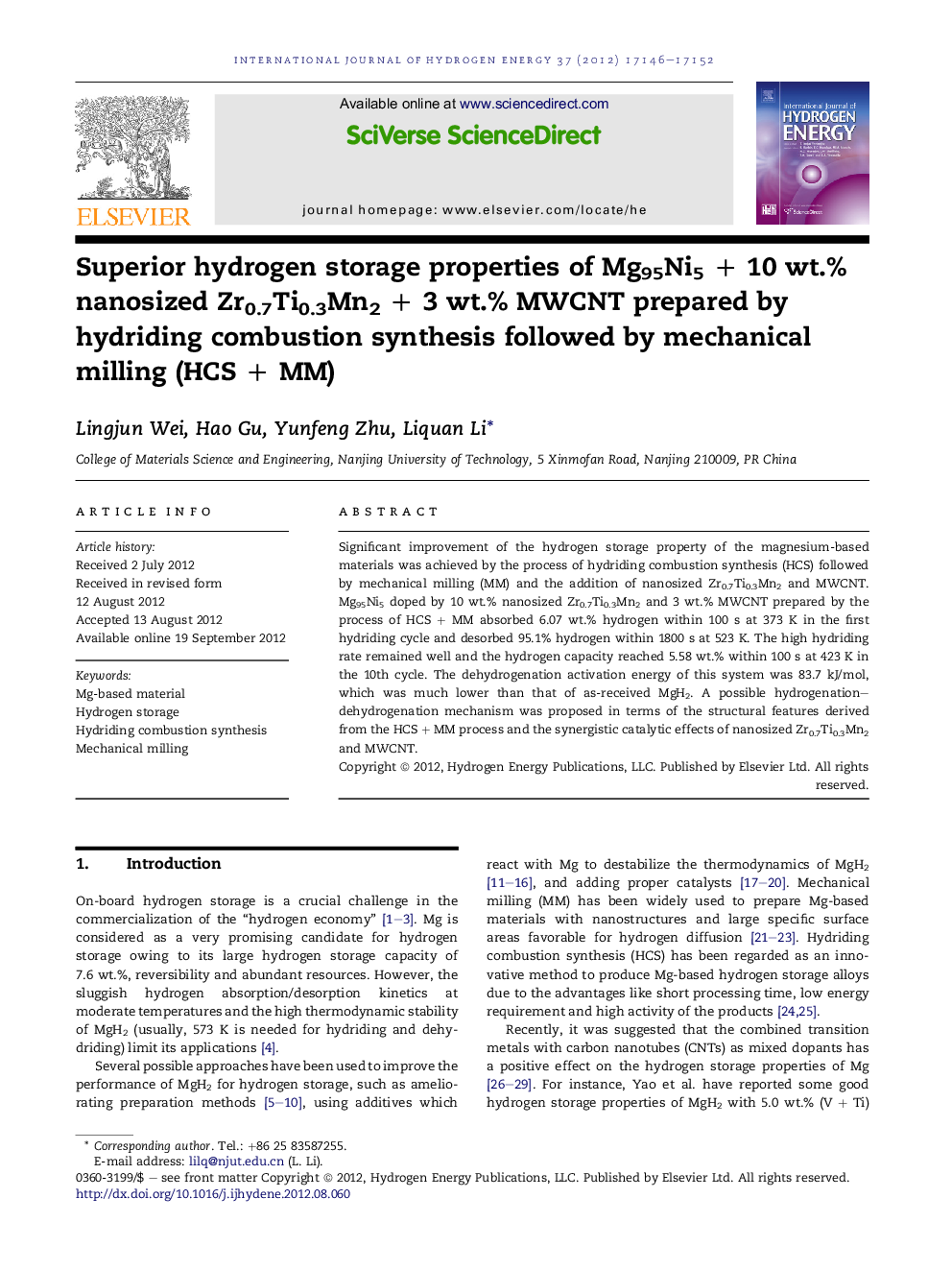| Article ID | Journal | Published Year | Pages | File Type |
|---|---|---|---|---|
| 1270898 | International Journal of Hydrogen Energy | 2012 | 7 Pages |
Significant improvement of the hydrogen storage property of the magnesium-based materials was achieved by the process of hydriding combustion synthesis (HCS) followed by mechanical milling (MM) and the addition of nanosized Zr0.7Ti0.3Mn2 and MWCNT. Mg95Ni5 doped by 10 wt.% nanosized Zr0.7Ti0.3Mn2 and 3 wt.% MWCNT prepared by the process of HCS + MM absorbed 6.07 wt.% hydrogen within 100 s at 373 K in the first hydriding cycle and desorbed 95.1% hydrogen within 1800 s at 523 K. The high hydriding rate remained well and the hydrogen capacity reached 5.58 wt.% within 100 s at 423 K in the 10th cycle. The dehydrogenation activation energy of this system was 83.7 kJ/mol, which was much lower than that of as-received MgH2. A possible hydrogenation–dehydrogenation mechanism was proposed in terms of the structural features derived from the HCS + MM process and the synergistic catalytic effects of nanosized Zr0.7Ti0.3Mn2 and MWCNT.
► Mg95Ni5 + 10 wt.% nanosized Zr0.7Ti0.3Mn2 + 3 wt.% MWCNT was prepared by HCS + MM. ► The composite exhibits the ultrafast kinetics with a high capacity. ► The composite has an excellent cyclic stability at 423 K. ► A possible hydrogenation–dehydrogenation mechanism was proposed.
